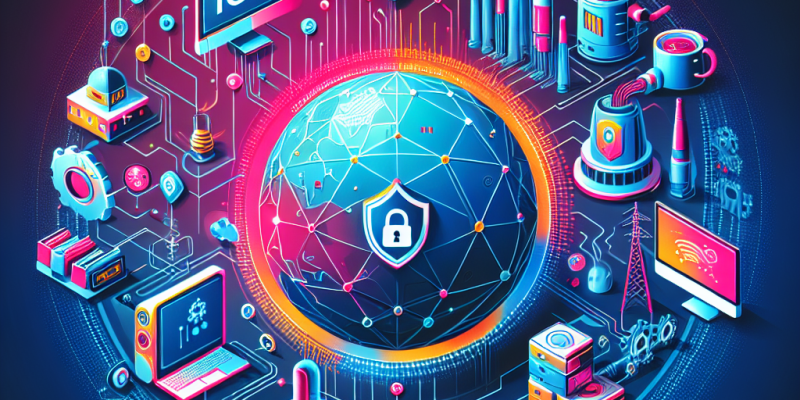Integrating IoT: The Future of Endpoint Security in a Connected World

As we move deeper into 2025, the world is becoming increasingly connected through the Internet of Things (IoT). From smart homes to industrial IoT, devices are now communicating and sharing data in ways we never thought possible. However, this connectivity brings significant challenges, especially regarding endpoint security. In this article, we will explore the latest trends in IoT integration and how they impact security.
The Rise of IoT
The IoT has rapidly evolved, with billions of devices now connected to the internet. By 2025, we see everything from refrigerators to city traffic systems relying on smart devices. This growth means more data is being collected and shared, creating new opportunities for innovation. However, it also opens the door to cybersecurity threats, making endpoint security more critical than ever.
Understanding Endpoint Security
Endpoint security focuses on keeping devices safe from attacks. Each device, whether a smartphone, tablet, or smart appliance, is an endpoint that can be vulnerable to threats. As more devices connect to the internet, the number of potential entry points for cybercriminals increases. This is where robust endpoint security comes into play.
Key Challenges in IoT Security
1. Device Diversity
IoT devices come in various shapes and sizes, each with different security needs. Some devices may have limited processing power, making it challenging to implement advanced security measures. As a result, weak security in one device can compromise the entire network.
2. Lack of Standardization
Unlike traditional computers, IoT devices lack universal security standards. This inconsistency makes it difficult for security teams to create a comprehensive protection strategy. With manufacturers focusing more on functionality than security, many IoT devices are shipped with inadequate security measures.
3. Increased Attack Surface
The more devices that connect to a network, the larger the potential attack surface becomes. Cybercriminals can exploit vulnerabilities in unsecured devices to access larger systems, leading to data breaches and exfiltration.
Solutions for Effective Endpoint Security
1. Implementing Zero Trust Architecture
One of the most effective ways to secure IoT environments is by adopting Zero Trust principles. This approach requires verification of every user and device attempting to access the network, regardless of whether they are inside or outside the organization’s perimeter. By continuously monitoring and validating devices, organizations can mitigate potential threats.
2. Regular Software Updates
Keeping software updated is crucial for maintaining endpoint security. Many vulnerabilities are fixed through patches, and regularly updating all IoT devices ensures that they are protected against known threats. Organizations should establish a robust update policy, making sure to include all connected devices.
3. Strong Authentication Measures
Using strong and multi-factor authentication can significantly reduce the risk of unauthorized access. Creating complex passwords and using biometric authentication can help protect sensitive data and minimize potential breaches.
4. Monitoring and Analytics
Leveraging advanced analytics and monitoring tools can provide real-time insights into device behavior. By analyzing normal patterns, organizations can quickly identify anomalies that may signify a potential threat.
Looking Ahead
The future of endpoint security in a connected world lies in proactive measures and continuous adaptation. As IoT technology continues to advance, so will the tactics of cybercriminals. Organizations must stay informed about emerging threats and implement new strategies to protect their networks effectively.
In conclusion, while the integration of IoT presents unprecedented opportunities for innovation, it also poses significant security challenges. By understanding the key issues and adopting effective security measures, organizations can safeguard their endpoints and thrive in this connected world. As we move forward, staying one step ahead of potential threats will be essential to ensuring a secure and thriving digital future.














